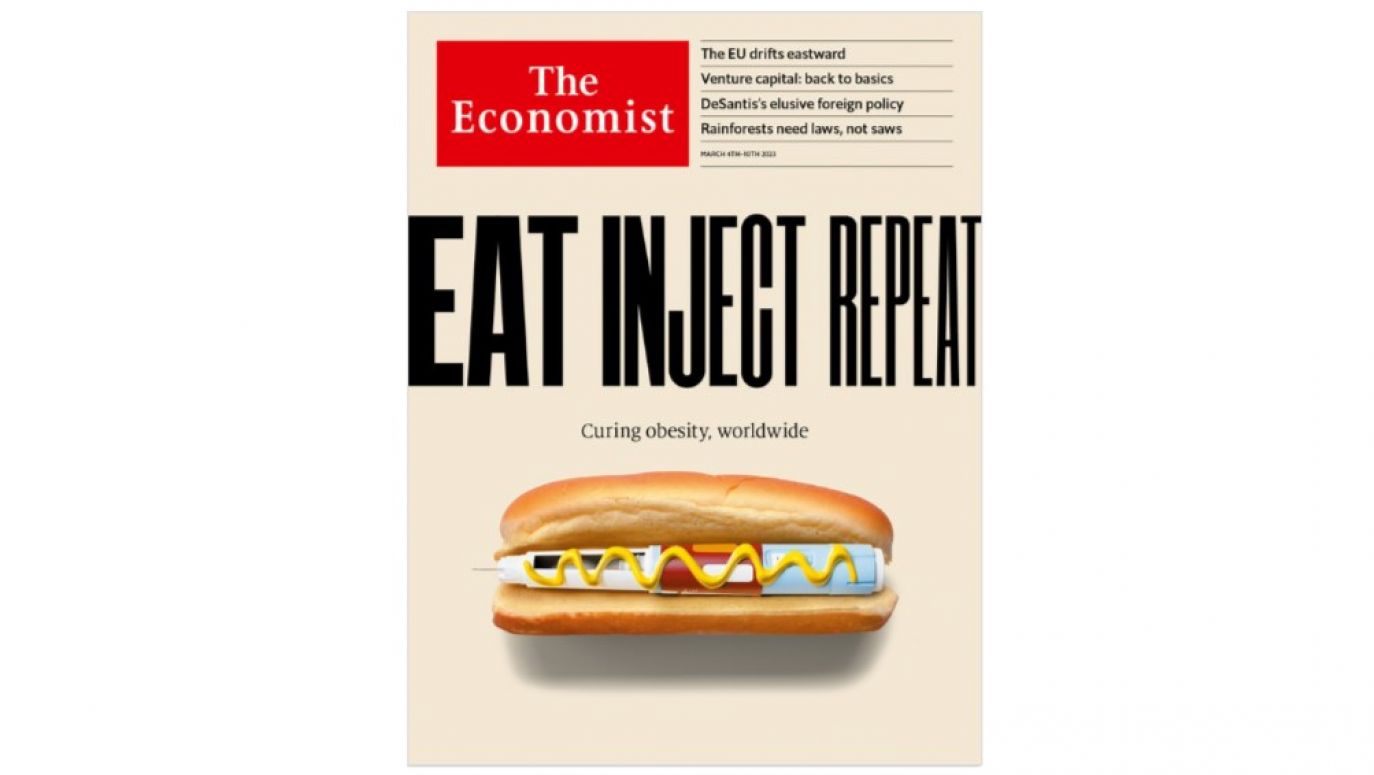If one of the world's most serious weekly opinion magazines, 'The Economist', announces something on its cover then know that something is happening that will either cost big money or deliver equally big or even bigger. In the issue of 4 March 2023, the cover opened with... a mustard hot dog that, instead of a sausage, had a plastic pen like the one for subcutaneous injections. On this pen was the mysterious name 'Ozempic' and the succinct title: 'Eat, inject, repeat'. The editor-in-chief, Zanny Minton Beddoes, ensured in the first sentence of her editorial that the cover finally gave the good news, as for the past few months it had been rather the war in Ukraine, Turkey's slide into authoritarianism, the destruction of globalisation, uncontainable inflation, etc., that had been emanating from it.
What is the good news? There are many indications that a new group of weight-loss drugs has entered the market with a bang. This is serious business and a potentially gigantic market.
The media is shaken by story after story about the deaths of adolescents with giant obesity, the type of a 15-year-old with a body weight of almost 150 kg, to say nothing of the television documentary series like 'My 600 lb life', which has been broadcast for many years. According to the WHO, the number of obese children and adolescents worldwide rose from 11 million in 1975 to 124 million in 2016, with an additional 213 million overweight. If current trends continue, by 2025 there will also be approx. 70 million children under the age of five with excess body weight. Against this backdrop, Poland does not look too bad so far, but it is quickly climbing up in these sad rankings, especially concerning children. Three in five adult Poles are already overweight. One in four is obese. The National Health Fund (NFZ) estimates that in six years' time one in three of us will be obese, when today about 10 per cent of young children (1-3 years old), 30 per cent of early school-age children and almost 22 per cent of adolescents up to the age of 15 are obese or overweight.
 SIGN UP TO OUR PAGE
SIGN UP TO OUR PAGE

The problem no longer affects the societies of so-called highly industrialised countries because junk food and fast food are the cheapest and globally available food alternatives. For previously regularly starving populations with organisms as energy-efficient as possible, this change is literally the nail in the coffin (because obesity is a risk factor for dangerous diseases ranging from cancer to diabetes to heart attack). Unfortunately, the civilisational progress of the so-called Third or Second World countries manifests itself in widespread access to a greasy burger with fries and a sweetened fizzy drink, rather than improved medical infrastructure and access to it for the poorest sections of society. And it is they who are feeding themselves and their children this junk food.
All these people, and not just Hollywood celebrities with a tendency to be overweight, will need a cheap and effective anti-obesity drug that, in addition, works miraculously, i.e. requires neither dietary sacrifices nor additional physical activity during treatment. A billion people are therefore counting on such a miracle today.

 SIGN UP TO OUR PAGE
SIGN UP TO OUR PAGE
 The problem no longer affects the societies of so-called highly industrialised countries because junk food and fast food are the cheapest and globally available food alternatives. For previously regularly starving populations with organisms as energy-efficient as possible, this change is literally the nail in the coffin (because obesity is a risk factor for dangerous diseases ranging from cancer to diabetes to heart attack). Unfortunately, the civilisational progress of the so-called Third or Second World countries manifests itself in widespread access to a greasy burger with fries and a sweetened fizzy drink, rather than improved medical infrastructure and access to it for the poorest sections of society. And it is they who are feeding themselves and their children this junk food.
The problem no longer affects the societies of so-called highly industrialised countries because junk food and fast food are the cheapest and globally available food alternatives. For previously regularly starving populations with organisms as energy-efficient as possible, this change is literally the nail in the coffin (because obesity is a risk factor for dangerous diseases ranging from cancer to diabetes to heart attack). Unfortunately, the civilisational progress of the so-called Third or Second World countries manifests itself in widespread access to a greasy burger with fries and a sweetened fizzy drink, rather than improved medical infrastructure and access to it for the poorest sections of society. And it is they who are feeding themselves and their children this junk food. 





